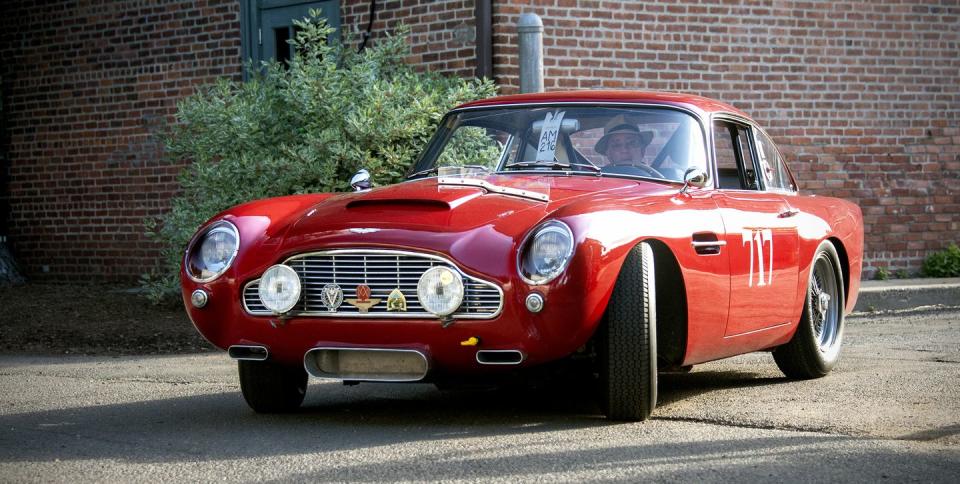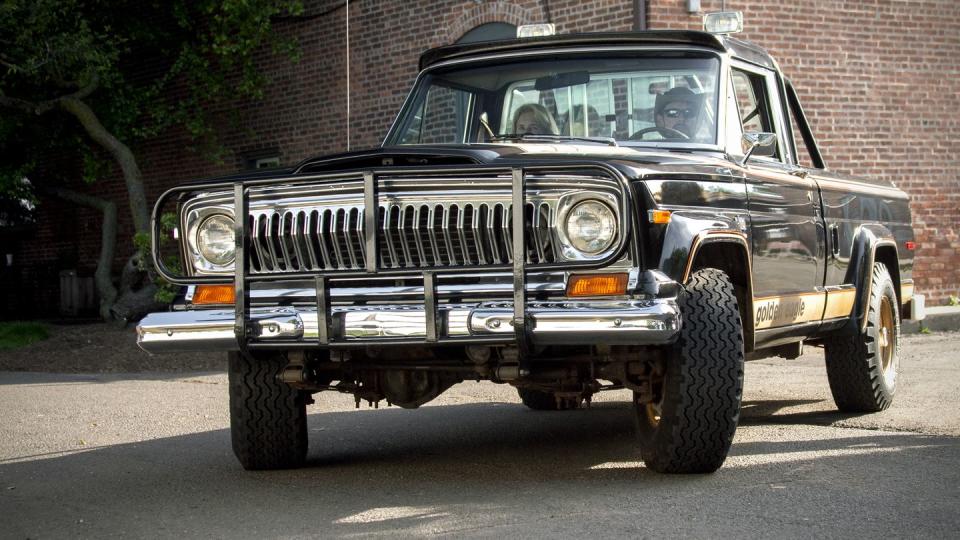7 Reasons You Need to Check Out the Greenwich Concours This Weekend

For over a quarter century Greenwich Concours has welcomed car enthusiasts from all over the northeast, and cars from the top collections in the region to its seaside venue, with Sunday's famous supercar extravaganza drawing plenty of crowds.
For 2023, after a couple years of experimentation including Radwood and Concours d'Lemons during last year's Saturday event, Greenwich is back to a two-day schedule with Concours de Sport on Saturday and Concours d'Elegance on Sunday. This schedule effectively replaces the classic Concours Americana and Europa weekend of years past, with new owner Hagerty steering the event to a more familiar classic car lineup.
"The picturesque Greenwich harbor set the stage and we were thrilled to host, engage and entertain so many car lovers this past weekend," Matt Orendac, vice chairman, Concours Group, Hagerty said last year.
The 2022 edition saw 140 cars in 18 classes on the grounds of Roger Sherman Baldwin Park on Sunday, with a Vignale-bodied 1948 Packard Convertible Victoria taking him the Best in Show award. In fact, Vignale was one of the featured classes last year, so car enthusiasts got to see a number of classics from this Italian carrozzeria.
But if mid-century Italian cars weren't your cup of intensely strong espresso, there were plenty of other fascinating classics to gawk at during Sunday's event.
Here are seven of our favorites from 2022.
ALSO CHECK OUT THE BIKES OF THE QUAIL
1974 De Tomaso Longchamp
This rarely-seen 2+2 arrived in 1971 and remained in production until 1989—a long product cycle if we've ever seen one. Based on the larger and far longer De Tomaso Deauville, the Longchamp was powered by Ford's 351-cid (5.8-liter) Cleveland V8, producing 330 hp. This beefy unit was paired with a choice of a three-speed Ford automatic, or a five-speed manual from ZF. But most buyers opted for the three-speed auto. The generous output gave the Longchamp a top speed of nearly 150 mph, but a high sticker price also assured that it would be an exclusive machine. Just 409 were built between 1971 and 1989.

1978 Jeep J-10
One of the classes in 2022 included Vintage Pickup Trucks—a category that has been popular at the top classic auctions for a while now. In addition to concours regulars like Dodge's L'il Red Express, Sunday's concours goers also saw the burly 1978 Jeep J-10 Golden Eagle, driven to the show by owner Eric Jankowski. That's right, it's not just the Wagoneers that are getting all the attention at concours these days! But it's far more difficult to find a J-10 in anything approaching concours conditions, as just about all of these were used up or succumbed to years of storage. That's why seeing this minty example was such a treat.

1971 Aston Martin DBS
David Brown's long-awaited successor to the Aston Martin DB6, the DBS arrived on the scene in 1967. But the generously sized grand tourer went into production before a new V8 intended for it had been ready, so the first few years of production saw plenty of use from the 4.0-liter six-cylinder borrowed that powered the DB6. The DBS stayed in production from 1967 through 1972, which seems like a short production run today, with 787 examples leaving the factory during that period.
Despite the handsome styling, the DBS was never viewed as a home run for the automaker, but interest in the model has surged over the past decade as collectors have been rediscovering these models. Red is a bit of a rare color for these, and seeing one in concours condition at Greenwich was one of the highlights for us.

1973 Momo Mirage
Don't worry if you haven't seen this one—the Momo Mirage is a bit of a rarity even for concours events. The sharp-angled grand tourer has an interesting history, being the brainchild of American businessman Peter Kalikow who sought to create a performance coupe with room for four. Styled by Gene Garfinkle and Pietro Frua, though at different stages, the large GT was powered by a 5.7-liter Chevy small-block V8.
Just a handful of prototypes were produced before the project folded, including five complete cars, with Kalikow retaining three of them. A blue one had appeared at Greenwich in 2012 but this green one, we believe, made its first appearance at Greenwich only last year. Kalikow has shown quite a few cars at the concours over the years.

1967 Bizzarrini 5300 GT Strada
Yet another Italian-bodied grand tourer with American power, the Bizzarrini Strada was the project of former Ferrari engineer Giotto Bizzarrini. Powered by a 5.4-liter Chevy small-block V8 sitting behind the front axle, paired with a four-speed manual transmission, the Strada produced 365 hp. The Strada was produced from 1964 through 1968 in a number of different flavors, including a lightweight variant for racing, as well as a fiberglass body instead of an aluminum one.
With a total of 133 cars produced during the entire run, the Strada remains a relatively rare sight on this side of the Atlantic, even though most surviving examples have settled in the top collections in the world.

1974 BMW 2002 Turbo
The BMW 2002 Turbo may not have been the first model among the Neue Klasse cars to enter production, but it was certainly one of the most influential when it came to Munich's performance history. Essentially the continent's first turbocharged production model, the 2002 Turbo was based on the fuel-injected 2002tii, receiving a boost from about 210 hp to 270 hp in race-going versions.
The domesticated versions for consumers were dialed down to 170 hp, giving it a top speed of 130 mph, but kept the body modifications including the spoiler, wider wheel arches, and a reworked front fascia. Just under 1700 units in total were produced, making each example quite valuable today.

1964 Triumph Italia 2000GT
This is indeed a Triumph underneath the Italian bodywork, penned by the famous Giovanni Michelotti. Hand-built by Vignale in Turin from 1959 through 1962, the Italia was based on Triumph TR3 and powered by a 2.0-liter straight-four, combining a bespoke Italian suit with a proven chassis. The car's production run happened to overlap with Leyland's purchase of Standard-Triumph in 1961, which effectively stalled plans for a 1000-car production run.
In all, about 330 units were made, nearly all of them in left hand drive. This 1964 example was likely among the last cars built in 1962, and may not have been sold until much later. A rare British-Italian collaboration from an interesting time for Triumph.


 Yahoo Autos
Yahoo Autos 